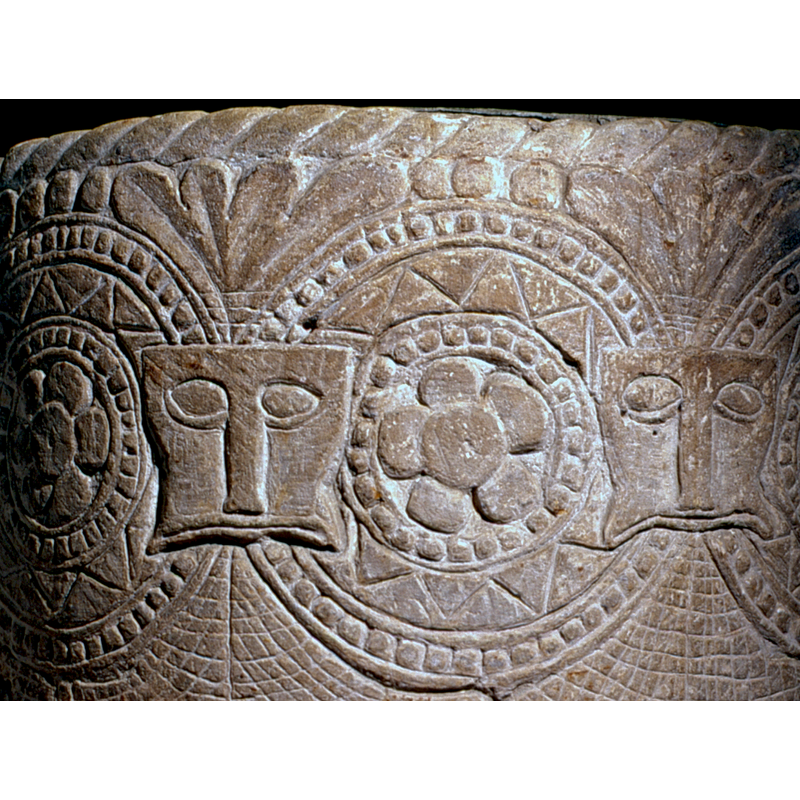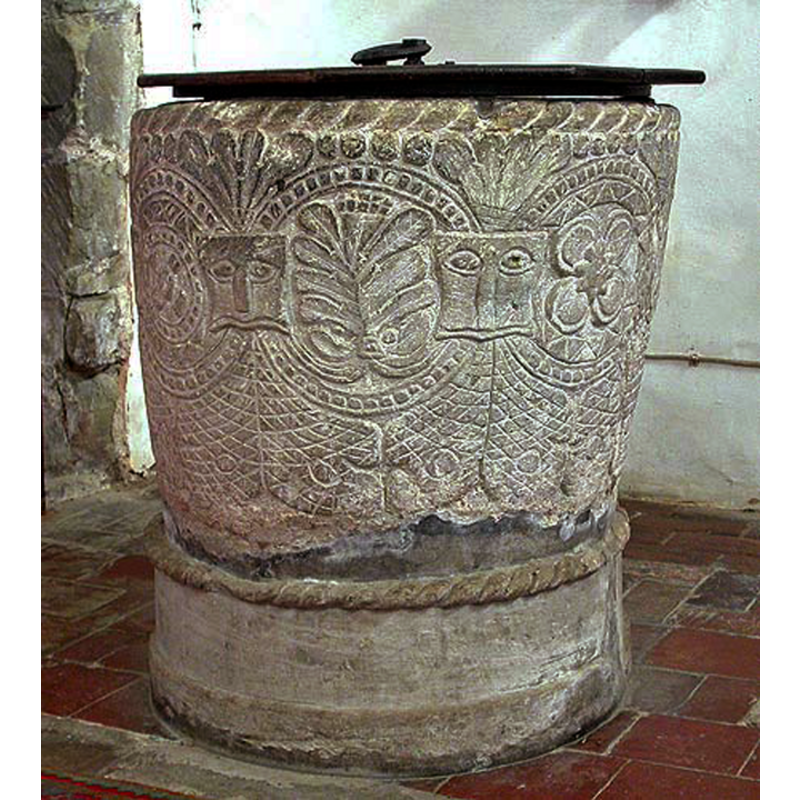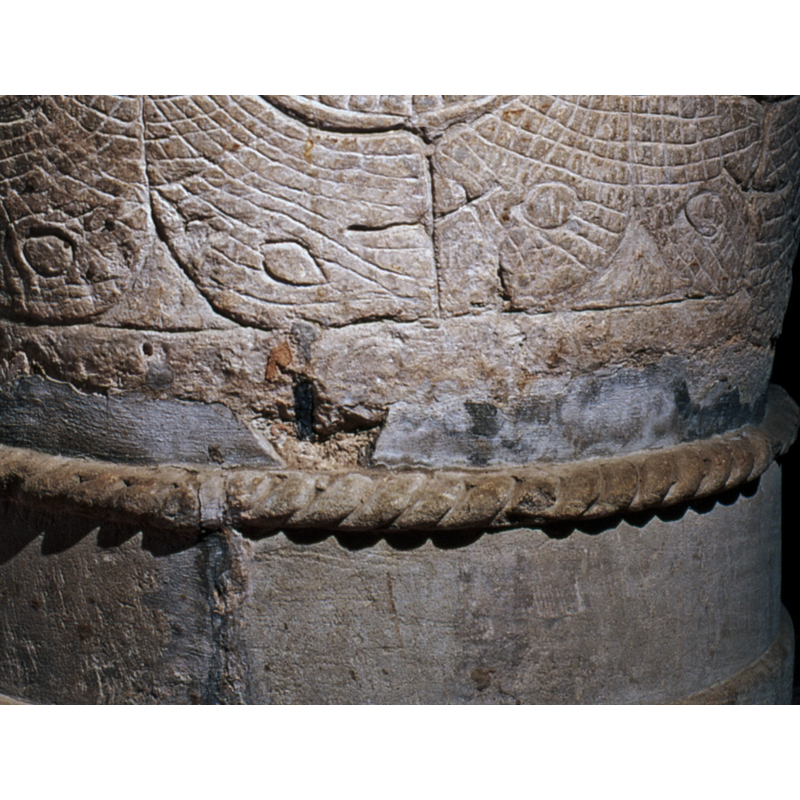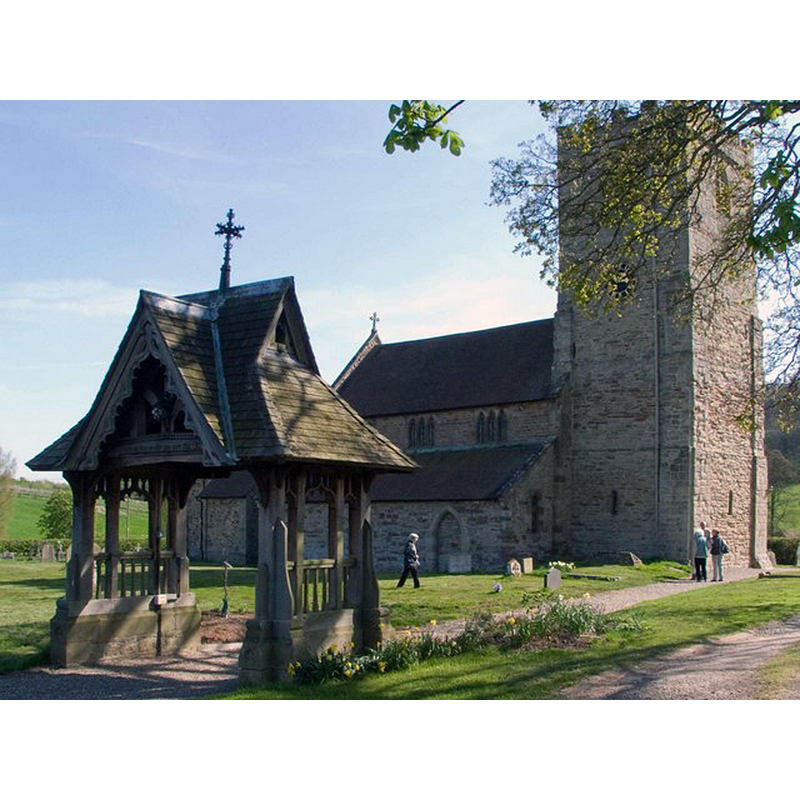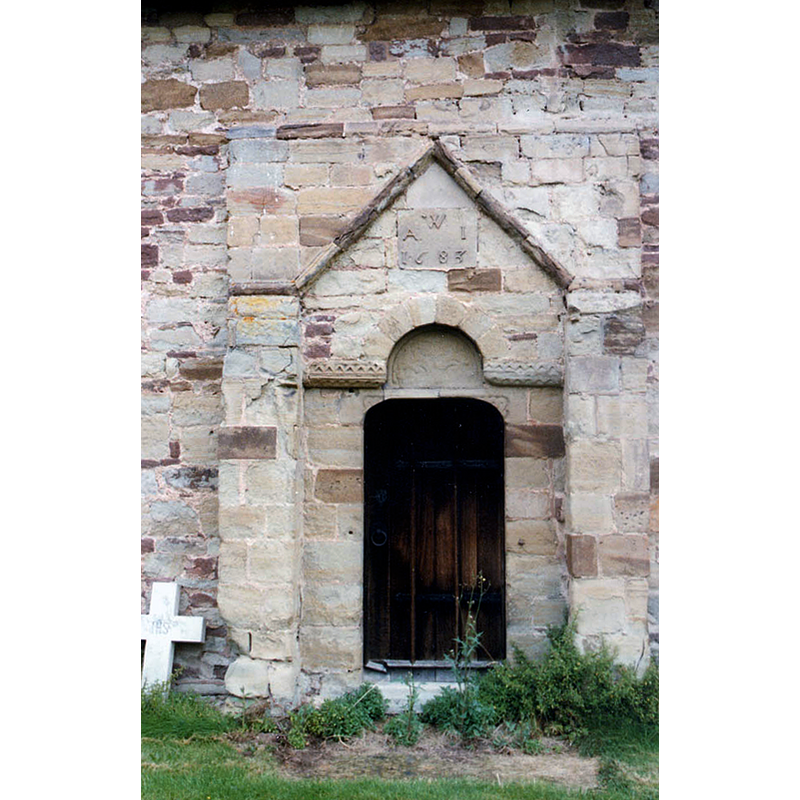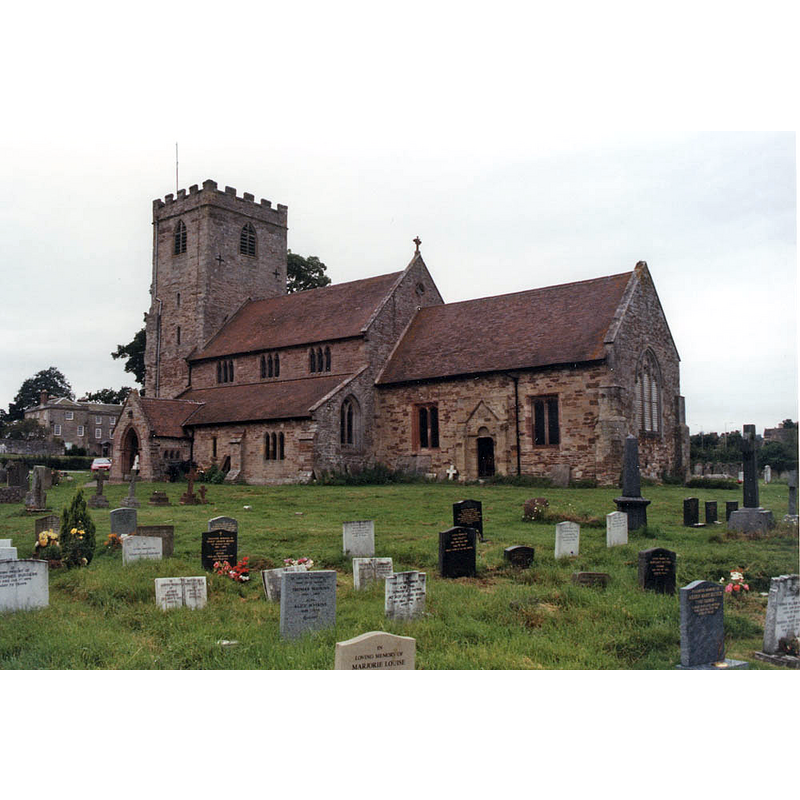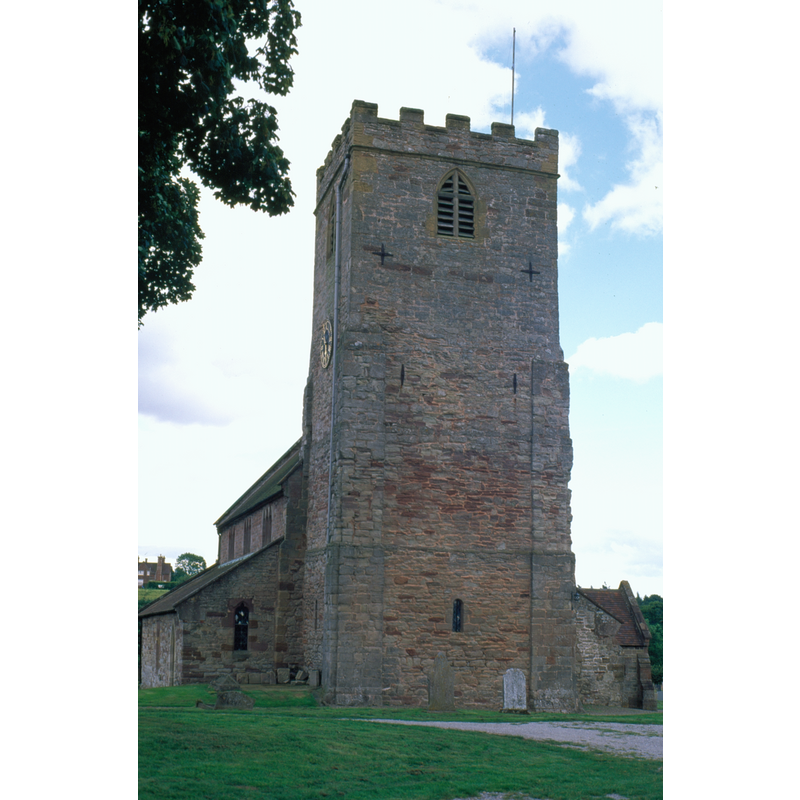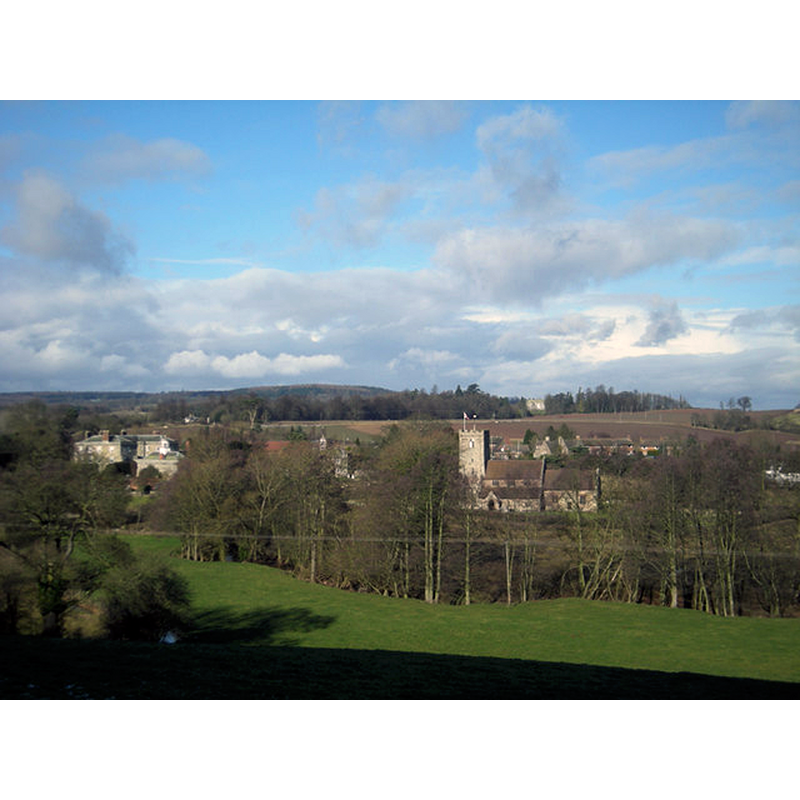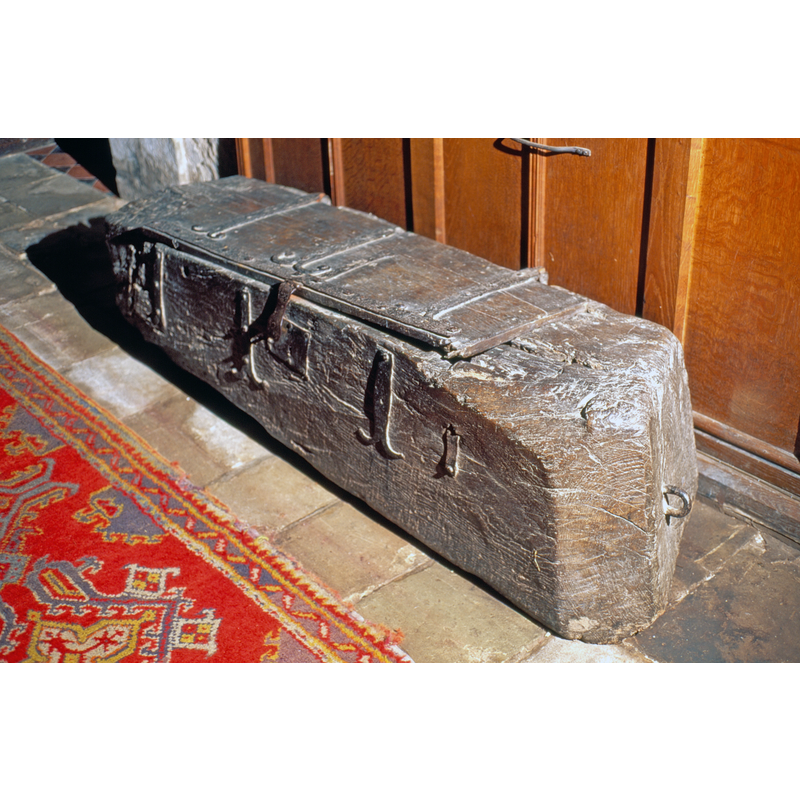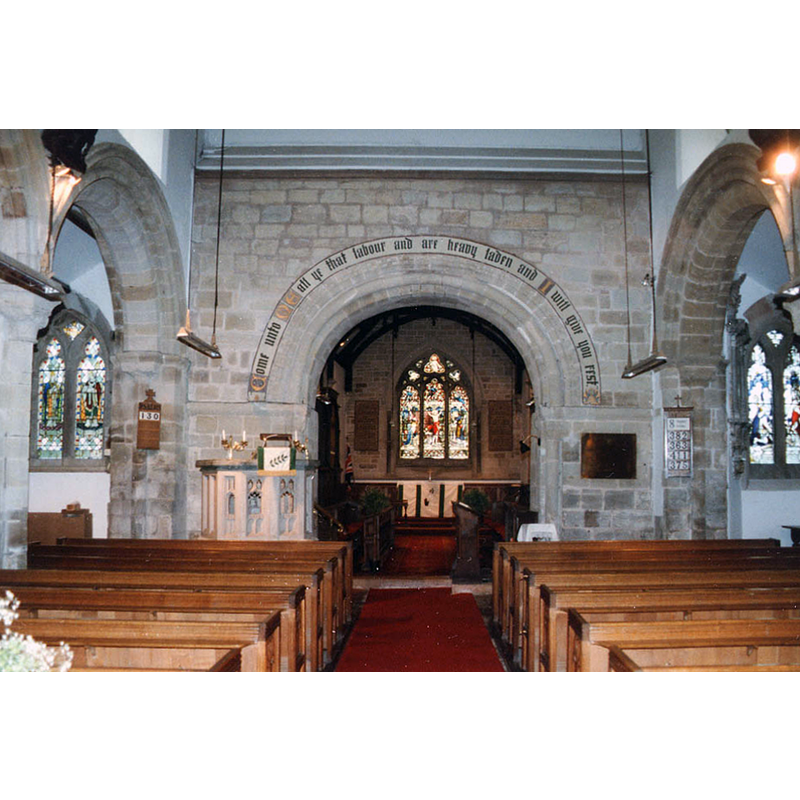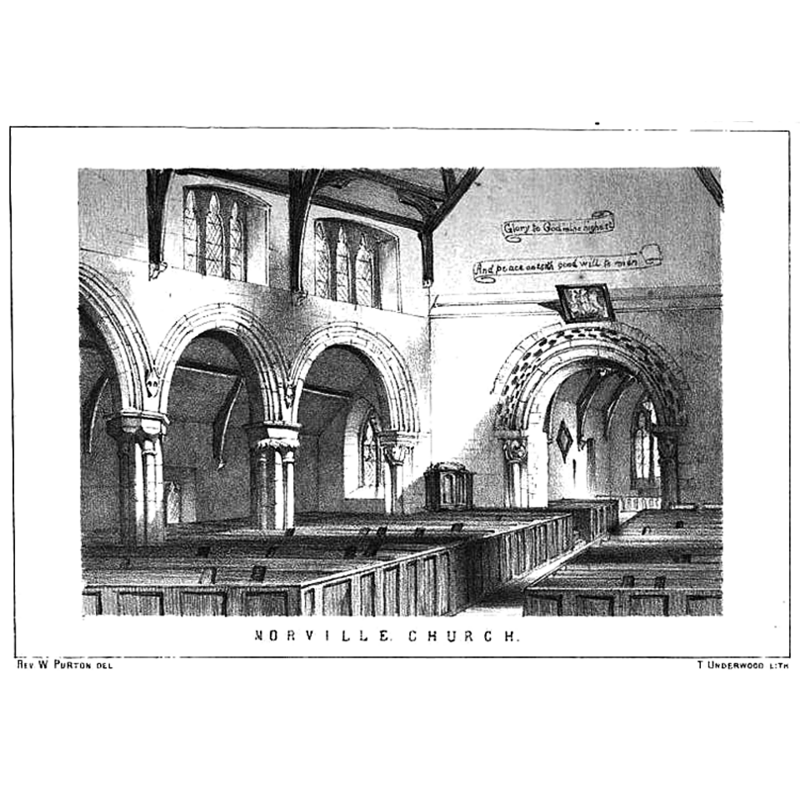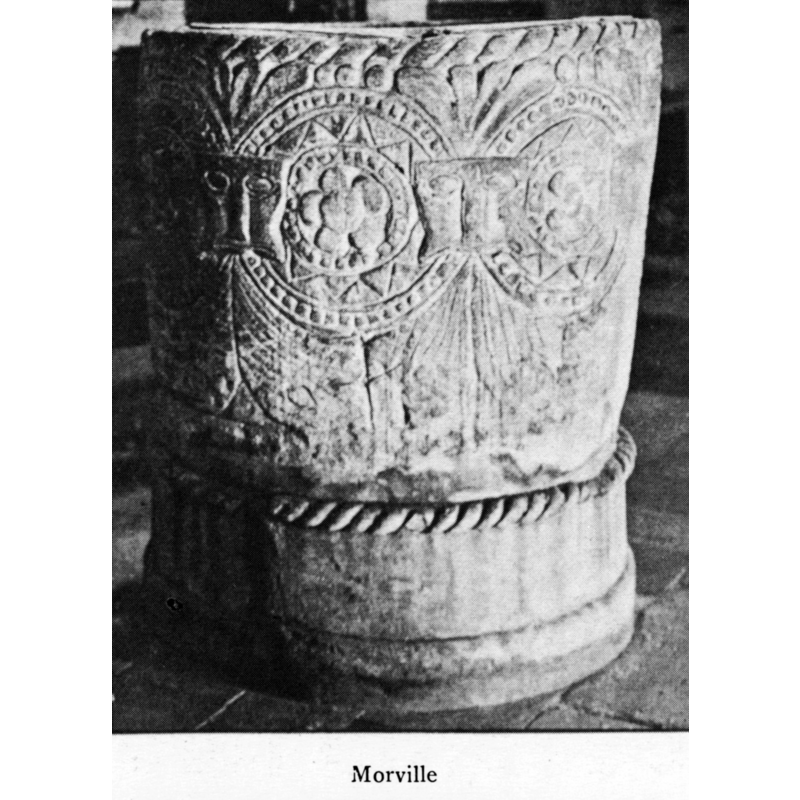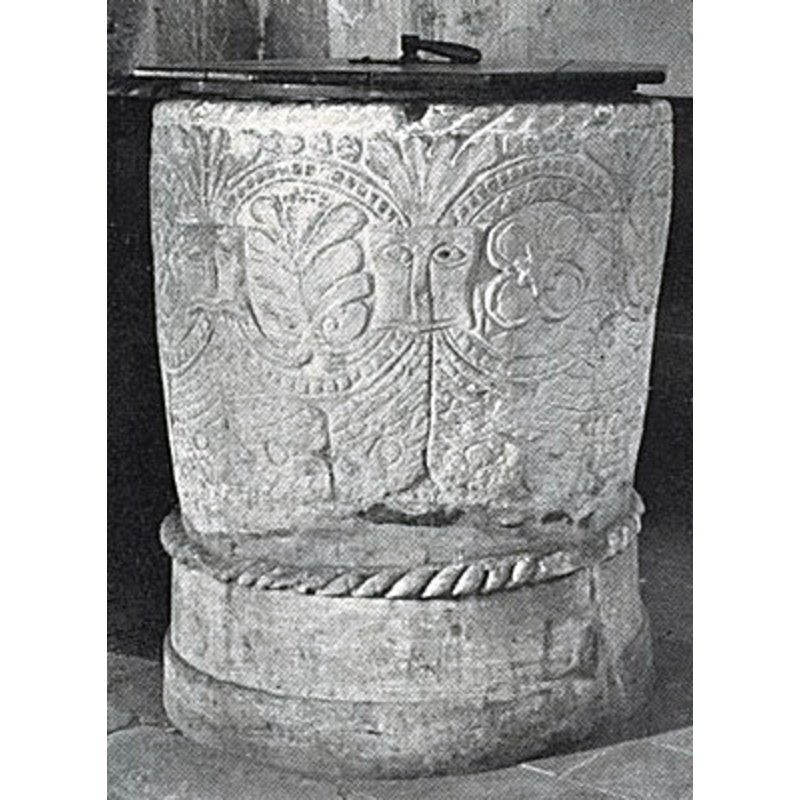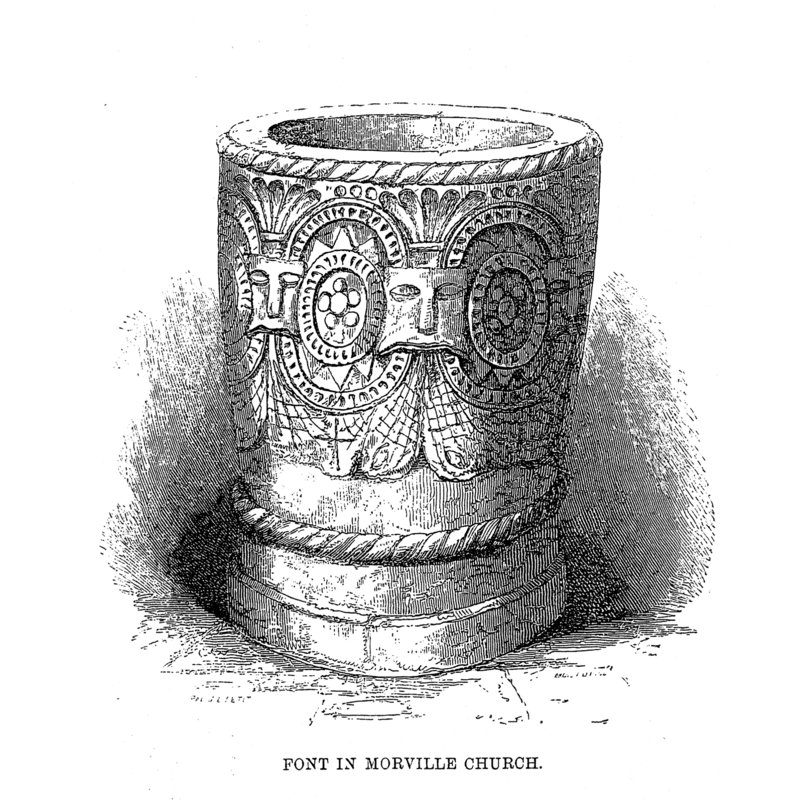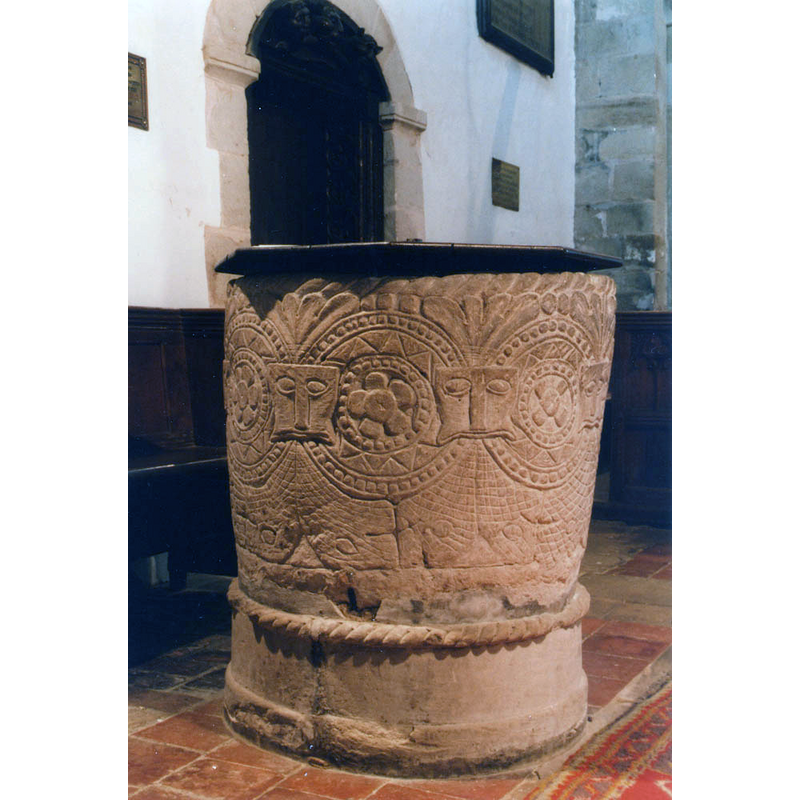Morville / Membrefelde
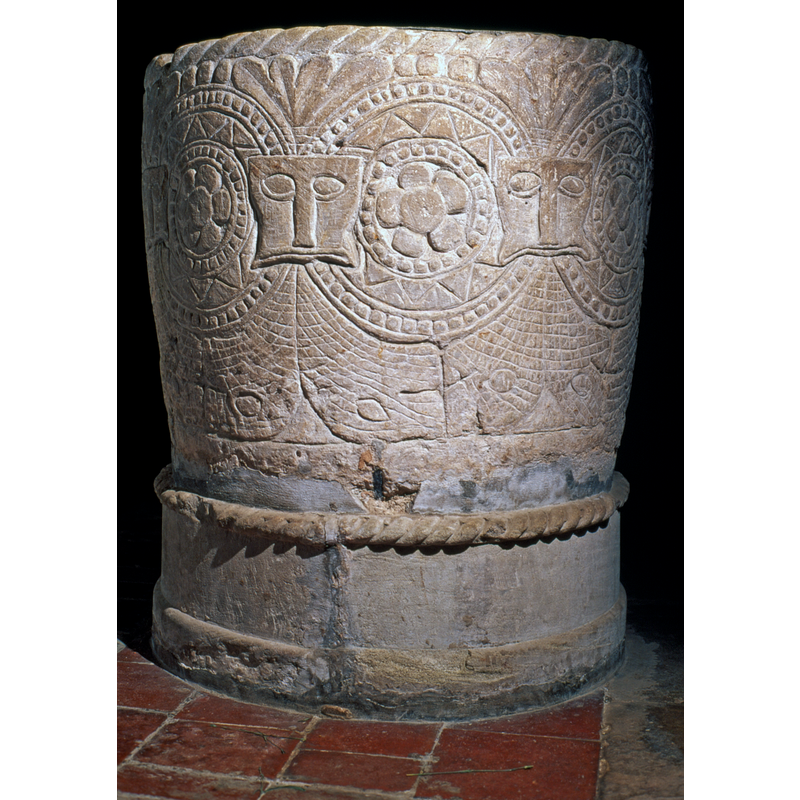
Image copyright © Baptisteria Sacra Index, 2023
Results: 23 records
animal - mammal - lion - head
design element - motifs - floral - flower - in a circle - beaded-tape
design element - motifs - floral - in a quatrefoil - in a circle - beaded tape
design element - motifs - foliage
design element - motifs - rope moulding
design element - motifs - rope moulding
design element - motifs - tree-like - in a cricle - beaded tape
design element - patterns - reticular
view of church exterior - northwest view
view of church exterior - south view - chancel portal
view of church exterior - southeast view
view of church exterior - west view
view of church exterior in context - south view
Scene Description: Source caption: "St. Gregory's Church in its setting. Looking across the Mor Brook to St. Gregory's with Morville Hall on the right, the village of Morville beyond the church & Aldenham House in the distance."
Copyright Statement: Image copyright © Row17, 2009
Image Source: digital photograph taken 11 February 2009 by Row17 [www.geograph.org.uk/photo/1160466] [accessed 29 May 2017]
Copyright Instructions: CC-BY-SA-2.0
view of church interior - alms box
view of church interior - nave - looking east
view of church interior - nave - looking northeast
view of font
view of font
view of font
view of font
view of font and cover
view of font and cover
view of font and cover in context
Scene Description: the font with the incongruous octagonal cover in context
Copyright Statement: Image copyright © John Salmon, 2011
Image Source: digital image of a photograph taken August 1997 by John Salmon [www.geograph.org.uk/photo/2246508] [accessed 29 May 2017]
Copyright Instructions: CC-BY-SA-2.0
INFORMATION
FontID: 00293MOR
Object Type: Baptismal Font1
Church/Chapel: Parish Church of St. Gregory the Great [former priory church of the Benedictine monastery]
Church Patron Saints: St. Gregory the Great
Church Location: Morville, Bridgnorth WV16 4RN, United Kingdom -- Tel.: +44 1746 767174
Country Name: England
Location: Shropshire, West Midlands
Directions to Site: Located off the A458-B4368 crossroads, between Bridgnorth and Much Wenlock, 5 km WNW of Bridgnorth
Ecclesiastic Region: Diocese of Hereford
Historical Region: Hundred of Alnodestreu [in Domesday]
Font Location in Church: Inside the church
Date: ca. 1118?
Century and Period: 12th century (early?), Norman
Cognate Fonts: some decorative details as on the fonts at Linley and Stottesdon, also in Shropshire, and in those of Cound and linley [cf. FontNotes]
Credit and Acknowledgements: We are grateful to Peter Fairweather, of www.churchmousewebsite.co.uk, for his image of this font
Church Notes: priory or collegiate church by 1044 or earlier; church of a former Benedictine monastery, a cell of Shrewsbury Abbey
Font Notes:
Click to view
There is an entry for Morville [variant spelling] in the Domesday Survey [http://opendomesday.org/place/SO6694/morville/] [accessed 29 May 2017], and it mentions three priests and a church in it. Lewis' Dictionary of 1848 reports: "the original font, which is bell-shaped, still remains." Illustrated in Eyton (1854- ) with a drawing by J.L. Petit. This drawing is reproduced in The Archaeological Journal (vol. 12, June 1855: 209), and in Anderson (1864), who notes: "The font is a curious and interesting relic." The font is described and illustrated in Wasey (1859), the illustration on a drawing by Rev. William Purton. Wasey (ibid.) disagrees with Petit's dating of the font: "The Font which is circular and without any shaft is covered with rude sculpture. Mr. Petit does not see any reason to assign to it an earlier date than to the oldest parts of the Church; though (he is obliged to add) "it is just of that character that might induce an antiquary to class it among very old specimens without any fear of being met by a decided proof to the contrary and is a curious and interesting relic worthy of careful preservation. For my part having studied it repeatedly I plead guilty to being one of its fondest admirers; and till Mr. Petit can prove the contrary must continue to attach the oldest date to it. I honour it as the holy instrument by which the Saxon forefathers of this neighbourhood were admitted into covenant with Christ their Redeemer long before the Norman invaders set their foot on English soil; and I pray it may still remain in its solid strength a source of blessings under Divine grace to as many generations as our world itself may see. To the kindness of the Rev. Wm. Purton I am indebted for an excellent drawing of this remarkable Font as well as for some of the other illustrations in this book." Noted in Timmins (1899). Listed in Cox & Harvey (1907) as a baptismal font of the Norman period. Described and illustrated in Bond (1908) as a bucket-shaped Norman font. Described in Newman & Pevsner (2006) who point out its similarities with the fonts at Linley and Stottesden, in the same county. On-site notes: bucket-shaped, almost cylindrical, unmounted bowl with a low base. The basin well is lined with lead and has a central drainage system. The bowl is carved with circular motifs joined and separated by animal heads, a design is very similar to the fonts of the Scania [i.e., Skåne, in southern Sweden] region. There are eight circles joined by six masks/heads, with two gaps without masks; the circles contain circular motifs, with a flower (4 and 6 petaled flowers) or a branch of leaves and fruit or animal. Five of the masks are square, typically Scandinavian, the 6th is a rounded human face. The upper and lower basin rims have cable motif around it. The top of the base has a cable around it. The rest of the stone has net-like motif as filler. A flat wooden cover with metal knob handle displyed in a B&W photograph of ca. 1950; a different (?) cover is shown on recent photographs, also flat and plain, but octagonal and with a ring handle. The brief entry for this church in Historic England [Listing NGR: SO6695493896] notes: "Collegiate church with long chancel, mostly late Norman. Fine early Norman chancel arch. Nave arcades have Transitional mouldings. The tall western tower has thick walls with flat buttresses. Cl4 stained glass window in chancel. Norman font." Listed and illustrated in the CRSBI [https://www.crsbi.ac.uk/view-item?i=9471]: "Tub-shaped. Plain base, which is probably modern. The outer wall of the font is decorated with eight roundels. The frames of the roundels are decorated with a string of beads. The beads are mostly square-shaped. The decoration inside the roundels varies from roundel to roundel (see below). With three exceptions, the roundels are linked by square faces, five in all. The faces have almond-shaped eyes, the eyelids being delineated. The noses are long and rectangular. At times they reach all the way down to the mouth. The mouth forms a wavy line at the bottom of the face, which lacks a chin. This wavy line extends right across the face. The area where the faces occur extends approximately halfway across the font from its SW to its NE side. The roundels situated between the NE side and the W side of the font, three in all, are not linked by faces. Instead, these roundels simply overlap. On the W face of the font, two roundels are linked by a more 'human' looking face. The face tapers towards the bottom and, unlike the other faces, is endowed with a chin. Furrows run horizontally across the forehead. In the centre of the forehead there is an incised triangle which forms the continuation of a vegetal ornament situated above the face. The eyes are almond-shaped. The eyelids are carved. The nose is elongated and tapers outwards slightly towards the bottom. The mouth is slightly open and the edges of the mouth curve upwards. The lower lip is slightly undercut. The spandrels between the roundels at the top are decorated with a leaf roughly of triangular shape, which terminates in four rounded tips, and, in between the leaves, with a series of large beads, ranging from two to four in number. The lower section of the font below the roundels is decorated with feather ornament. Two feathers emerge from below a face or, where they are not present, the meeting point of the two overlapping roundels. The feathers, which point in opposing directions, are hatched. They are also adorned with a circle, which is situated at the widest span of the feathers, close to the bottom of the font. This circle can be found on 15 of the 16 feathers. It is lacking in one feather on the SW side of the font where there is some damage. The top of the font is decorated with one line of cable moulding, as is the bottom. The cable moulding at the bottom is damaged in parts. The area between the feather ornament and the cable moulding at the bottom of the font is also damaged, but originally appears to have been plain. The decoration of the inside of the roundels is set out below, starting on the E side with the roundel on the L. […] The font is by the same workshop responsible for the fonts at Cound and Linley. (Fieldworker)"
COORDINATES
Church Latitude & Longitude Decimal: 52.5419, -2.4886
Church Latitude & Longitude DMS: 52° 32′ 30.84″ N, 2° 29′ 18.96″ W
UTM: 30U 534682 5821436
MEDIUM AND MEASUREMENTS
Material: stone, type unknown
Font Shape: tub-shaped (mounted)
Basin Interior Shape: round
Basin Exterior Shape: round
Drainage Notes: lead-lined
Rim Thickness: 8.5 - 9.5 cm*
Diameter (inside rim): 63-64 cm* / 64.5 cm**
Diameter (includes rim): 80-82 cm* / 80.5 cm**
Basin Depth: 27 cm*
Height of Basin Side: 65 cm*
Basin Total Height: 65 cm* / 69 cm**
Height of Base: 27 cm*
Font Height (less Plinth): 92 cm*
Notes on Measurements: * BSI on site / ** CRSBI
LID INFORMATION
Date: modern
Material: wood
Apparatus: no
REFERENCES
Anderson, John Corbet, Shropshire, its early history and antiquities, comprising […], London: Willis and Sotheran, 1864
Bond, Francis, Fonts and Font Covers, London: Waterstone, 1985 c1908
Clapham, Alfred William, English Romanesque Architecture after the Conquest, Oxford: Clarendon Press, 1934
Cox, John Charles, English Church Furniture, New York: E.P. Dutton & Co., 1907
Lewis, Samuel, A Topographical Dictionary of England, Comprising the Several Counties, Cities, Boroughs, Corporate and Market Towns, Parishes, Chapelries, and Townships, and the Islands of Guernsy, Jersey, and Man, with Historical and Statistical Descriptions [...], London: S. Lewis, 1831
Newman, John, Shropshire, New Haven: Yale University Press, 2006
Timmins, H. Thornhill, Nooks and corners of Shropshire, London: Elliot Stock, 1899
Wasey, George Leigh, Rev., Our ancient parishes, or a lecture on :Quatford, Morville & Aston Eyre 800 years ago", delivered before the Bridgnorth Society for the Promotion of Religious and Useful Knowledge […], Bridgnorth: Clement Edkins, 1859
